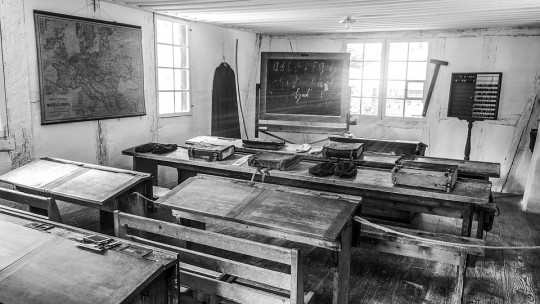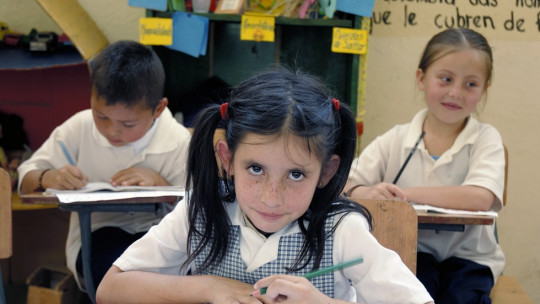There are different pedagogical and psychological models that try to explain how teaching is transmitted and how learning occurs. The didactic triad is a pedagogical model which has its roots in the late 19th century, and which focuses on three components: the student, the teacher and knowledge.
In this article we will analyze the characteristics of the model also known as the pedagogical triangle, its components, and the relationships (called “processes”) that occur between them. Finally we will mention the criticisms that the didactic triad has raised.
How do we learn?
They say we learn every day of our lives. Learning involves acquiring knowledge and skills; Furthermore, it allows us to modify previous beliefs and enrich ourselves with the stimuli of the environment. As we have mentioned, There are different orientations or models to explain how we learn
Learning models
Classic or traditional models They refer to passive processes, where the student received the information that he had to learn, and reproduced it in the exam corresponding (in fact, the current evaluation model in the educational system is based on this method).
However, later other models emerged: behavioral models, for example, which are based on stating that knowledge is managed or “controlled” by the teacher, who offers it to the students themselves, but forgetting the more cognitive or emotional variables. .
Later there arose the cognitivist models, which focused their attention on how the student processes information when learning giving a central role to cognitive abilities (attention, memory, perception,…).
On the other hand, we find progressive models, which focus on the student himself as an active agent when explaining the teaching-learning processes.
Finally, we have the didactic triad model, which presents characteristics of all the models, and which assumes an integrative approach, but more of a constructivist type. This orientation defends that the student constructs his own knowledge by maintaining an active role Let’s see the most important characteristics of the model.
Didactic triad: characteristics
The didactic triad is a pedagogical model proposed by Jean Houssaye, a French professor, in 1986 It was in that year when he presented his thesis, which referred to the relationship between three components in every pedagogical or educational act. These three components are: the teacher (or teacher), the student and knowledge.
Houssaye’s thesis was the starting point to begin developing this psychopedagogical model, although in reality it was years before, in the mid-19th century (1850), when the first ideas of this theory began to appear.
The didactic triad moves away from behavioral models that focus attention on the role of the teacher as “controller” of knowledge This model aims to explain the teaching-learning processes based on bidirectional relationships between three elements that influence each other: the teacher, the student and knowledge.
Components of the pedagogical triangle
As we have seen, The components that make up the didactic triad are: the teacher, the student and knowledge According to this model, these three elements are essential for learning to occur, that is, any pedagogical act that involves someone teaching something to someone (in this case, teacher and student).
1. Teacher
The first component of the didactic triad, the teacher or teacher, is the person who transmits knowledge to the student through a series of educational strategies It is the reference figure for the student in terms of their growth at a cognitive and educational level, since it will allow them to assimilate and understand new concepts, which will enrich their culture and their person.
2. Student
Within the didactic triad, the student is the one who “receives” the knowledge; but it is not a passive reception, but rather it consists of the student himself plays an active role in the learning process giving meaning to what is internalized.
That is, the student learns, acquiring knowledge that he did not previously have, but To do this, you must be motivated and open to knowledge It is the active agent of the triad.
3. Knowledge
Knowledge is the material to learn. It is not a physically tangible material, but rather a a set of information, data, experiences, theories and ideas that the teacher will transmit to the student, making him participate in it so that he finally apprehends it (apprehending goes a little beyond learning, and implies assimilating, understanding something).
Relationships or processes
Between the components of the didactic triad, bidirectional relationships occur. These relationships are called processes, and three occur simultaneously: between the teacher and knowledge (teaching), between the teacher and the student (training/practice) and between the student and knowledge (learning).
Let’s analyze each of these processes:
1. Teaching
In the didactic triad, teaching is the process that arises as a consequence of the relationship between the teacher and knowledge These two components are essential for teaching to occur; Thus, the teacher imparts his knowledge to teach the student.
2. Training
Also called practice, it is the relationship that occurs between the teacher and the student Depending on what this relationship is like, learning will happen more or less easily.
If the relationship is favorable and fluid, communication will be easier and training, that is, the process that originates between these two components, will be more positive, making it easier for the student to take advantage of the teaching situation.
3. Learning
The third relationship of the didactic triad occurs between the student and knowledge. That is, it has to do with how the student interacts with the knowledge that the teacher imparts, with how you manipulate that information, how you use it etc.
If the relationship is beneficial, the student will end up learning, that is, learning will occur, and the pedagogical act will have been successful, since it will have fulfilled its purpose.
Model criticism
Although the didactic triad offers a very complete explanation to illustrate the teaching-learning processes, Like any model or theory, it has also raised certain criticisms
Those who are not so in favor of the didactic triad as an explanatory model of this type of processes, allude to three arguments:
1. Context
This model leaves aside the context in which learning occurs Critics of the didactic triad argue that context is also a fundamental part of understanding how a person learns, and/or how another person teaches, transmitting knowledge.
2. Knowledge as something tangible
Critics also believe that knowledge is not really something tangible, physical, or something that can be “touched” (as the didactic triad defends). That is to say, It is not something that can be “acquired” and it is not something that affects the other components of the learning process unlike what the triad model states.
3. Teacher independence and knowledge
Another criticism made by detractors of the model is that They consider that the teacher and knowledge are not really independent components and that cannot be stated, as the model maintains.









